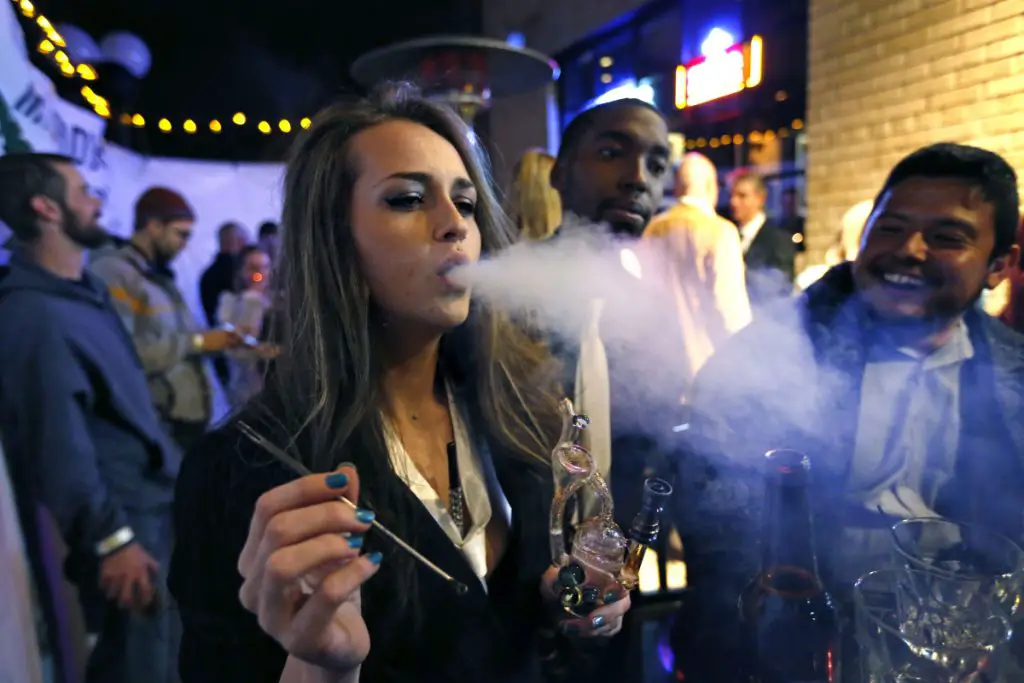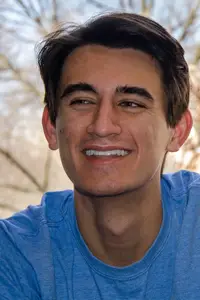In terms of drug culture, the United States has entered into a bizarre era, one characterized by a discrepancy between policy and reality, as the country seems unable to decide where it stands in regard to its love/hate relationship with illicit substances.
On one hand, more Americans than ever are engaging in the consumption of both legal and illegal narcotics. According to researchers at the University of Michigan who conducted a nationwide study called “Monitoring the Future,” the daily use of marijuana by college students is the highest it’s been in thirty years, and an astounding one in twenty students smokes or digests some form of the substance every twenty-four hours.
And, according to the study, it’s not just marijuana usage that’s on the rise. The Michigan study found that 51 percent of full-time college students had used an illicit substance at some point in their lives, and that 39 percent of those surveyed had consumed such a substance within the last year. According to the National Center on Addiction and Substance Abuse, though Americans only account for about 4 percent of the world’s population, they consume nearly two-thirds of its illegal drugs, a feat of hedonistic supremacy that is nothing short of mind boggling.

From South American coca farms to Afghan poppy fields, drug cartels across the globe have Americans to thank for their booming business. However, the American thirst for narcotics doesn’t stop with the illicit, as demand for prescription drugs is on the rise as well. In a separate study, the National Institute on Drug Abuse announced that the U.S. consumes nearly 100 percent of the Vicodin produced worldwide and about 81 percent of the Percocet.
On the other hand, despite this love for drugs, or perhaps because of it, America is also home to a massive number of incarcerated individuals, the largest per capita of any country; and, according to the 2016 Prison Policy Initiative (PPI), one in every five of these prisoners is behind bars due to a nonviolent drug offense. Of those imprisoned for drug-related crimes, the majority of them are people of color from lower socioeconomic backgrounds. According to the PPI, though African Americans make up only 14 percent of the U.S. population, they make up 40 percent of the prison population; whereas Americans of Caucasian descent, who account for 65 percent of the nation’s population, represent only 39 percent of its incarcerated population. This is the harsh reality of prison disparity in America, and drugs and the laws that govern their usage happen to be a major vehicle for this inequality.
Bursting the Campus Bubble
One place that both personifies this inequality and, at the same time, offers an oasis from it, is the college campus. When it comes to drugs, universities hesitate to enforce laws that could potentially cast them or their students in a poor light. By employing campus police and setting their own administrative rules, colleges ensure that students rarely face prosecution for drug offenses or seek treatment at drug rehab centers like Desert Hope Treatment. This is especially true for small private colleges that rely on the donations of wealthy parents and alumni to support their endowments.
According to Inside Higher Ed (IHE), between 2012-13, the last available time frame for federal data on the topic, small, prestigious, private colleges across the nation exhibited large discrepancies between students referred for disciplinary action for drug-abuse violations and those who were actually arrested for such violations.
In one year, at Wesleyan, over five hundred students were referred for disciplinary action involving illegal-narcotics abuse on campus, but only four students were arrested. In the same year, at Colgate University, nearly two hundred-fifty students were referred and only six were arrested. During those same years, at Oberlin College, Kenyon College, Reed College and Occidental College, the discrepancies were similar—disciplinary referrals in the hundreds and arrests in the single digits. This reality illustrates the disparity between individuals of color from low-income backgrounds who face jail time for use or possession of narcotics, and the college users who may face only a short suspension.

As a result of this insularity, finding and obtaining drugs on a college campus is absurdly easy. Whether it’s soft like weed, prescription like Adderall and Xanax or party-oriented like molly, coke and acid, the market for drugs is booming. And, as a student, I am familiar, in a general sense, with the drug culture and the extent to which a bubble of sovereignty bubble protects it on campus. Still, I wanted to get a better understanding of just how protected college kids are from the laws that send thousands of young people of lower socioeconomic standing to prison.
To do so, I spoke with two local, student dealers, who I’ll call Lee and Reynolds. Both young men sell drugs, but they look far different than the typical image you might associate with the term “drug dealer.” The truth of the matter is, though they hail from different backgrounds—Reynolds comes from an upper-class Caucasian family, whereas Lee is of Asian descent and grew up without financial security—they’re both just typical college kids. Two typical college kids who make money selling narcotics.
Of course, the reason that drugs are so profitable is because those who sell them take on a sizable risk. However, strangely enough, neither Reynolds nor Lee seems particularly worried about the consequences that they could face. Their insouciance stems from a combination of two factors, the first of which is the normalization of drug use within college culture, and the second is the perception of safety that the college bubble provides. Lee shared this view, saying, “There have been a handful of times when I was nervous about the possibility of getting caught. For the most part though, as long as you’re not an idiot, administration and campus police don’t come after you. A drug bust is almost worse for the school’s publicity than it would be for me.”
Reynolds says that he’s never had anything that he’d consider a close call, and that even if the school caught him, that it wouldn’t mean much. “Worse comes to worse,” he says, “I’d get suspended for a semester or two, which would obviously suck, but it wouldn’t be the end of the world. I mean my parents would be pissed, but I’d live.” Explanatory factors aside, I was still stunned by their nonchalance. Had I only been talking with Reynolds, I might have been able to attribute his confidence to the privilege his family’s wealth has afforded him. However, Lee had an almost-identical attitude.
The way that Lee and Reynolds viewed the products they were selling was simply as that—products.
Not only did the two students seem unworried about the possible legal repercussions of their actions, they also seemed unfazed by the health consequences of drug use. It’s not as though they don’t care about the well-being of others though; rather, they seemed to believe that if students want to introduce unhealthy substances into their bodies, then that was their prerogative. Lee, in particular, felt unremorseful, because he considers the drugs he sells to be relatively safe. “It’s weed and Adderall,” he says. “Worst case scenario, they sleep through a class or study a little too hard. I never sell anything that I wouldn’t take myself. Of course I don’t want to see anyone get hurt, but if they want to do drugs, that’s their problem.” When asked, Reynolds became visibly annoyed. “Fuck that,” he says, “kids die from alcohol poisoning all the time. The majority of what I sell is weed, and no one dies off weed. I’ll feel guilty the day liquor stores do.”
The bottom line is that, for better or worse, drugs are no longer as taboo as they used to be. Both the students who buy and those who sell seem to see narcotics not as something criminal, but as a personal choice. This viewpoint doesn’t seem to be limited to students alone. The past few years have seen recreational marijuana become legal in multiple U.S. states, and a handful of progressive countries have gone so far as to decriminalize drugs altogether. Indeed, the nonchalance of Lee, Reynolds and other university users toward narcotics appears to be not an attitude confined to college campuses, but one becoming pervasive in modern culture. However, even such an admission is a privileged sentiment. Prisons in the United States are filled with young men who are the same age as Lee and Reynolds, many of whom are serving harsh sentences for selling the same drugs that my two friends do. The only difference? The young men behind bars are not in college.
The Future of Usage
In light of the updated statistics on drug usage in college, in combination with the anecdotal evidence the two dealers I spoke with, I am inclined to make two conclusions. The first is that college campuses, whether intentionally or inadvertently, create an environment in which students feel above the law, at least to some extent. Through their use of private, campus security and their autonomy to mete out consequences as they see fit, schools create an atmosphere in which students have little to fear in terms of legitimate legal consequences.
Second, drugs have become normalized on college campuses. The way that Lee and Reynolds viewed the products they were selling was simply as that—products. Granted, both acknowledged the negative health effects of the narcotics they sold, but in a culture that increasingly sees drug use as a personal choice and not a symptom of criminality, dealers feel as scrupulous about their merchandise as convenience stores feel about theirs. On a positive note, there is reason to believe that these changing attitudes toward drug use will eventually find their way beyond undergraduate bong hits and into courts of higher law. Hopefully, the privilege that university students enjoy to be able to dabble in narcotic use will help shape their attitudes toward other users, and eventually lead those who have benefitted from the socioeconomic disparity to work to end it, or rather, extend it to others.
With any luck, these privileged individuals can push the U.S. to follow the lead of countries such as Portugal, Spain and Italy, all of which have liberalized drug usage, as doing so would positively impact American citizens, in addition to having beneficial repercussions globally. As the number-one consumer of illegal narcotics, the United States is responsible for supporting the efforts of drug cartels across the planet, organizations that are responsible for loss of life, the destabilization of governments and the exploitation of thousands. To liberalize drug usage would be to sever the lifeline of these organizations and drain them of their resources. Liberalization would also undo the shackles of the countless non-violent drug offenders who crowd our prisons. A modernized drug policy has the potential to do away with the fear of incarceration that hangs over the heads of millions of people of color, and it would save taxpayers millions by reducing prison and law-enforcement expenses.
If you believe such a shift in drug policy is possible, you have to believe that it can spring from the privileged college bubble that exists today. However, in order for this to happen, those who experience this privilege, this ability to sell and use drugs with near impunity, must be self aware enough to understand that the advantage they have enjoyed is unjust. Privileged students must be willing to work so that all Americans can enjoy the privilege that they have, so that this nation may at last put an end to the barbaric conflict that is the war on drugs.

















